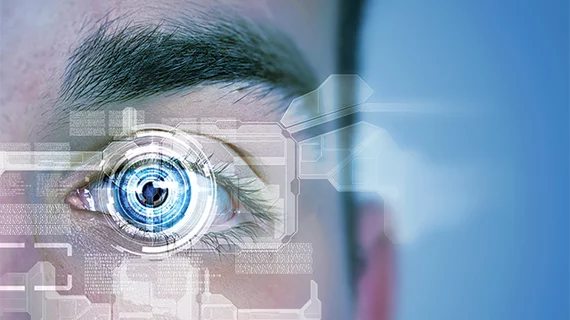Deep learning improves vision care with superior image analysis
Deep-learning analysis of eye scans has proven superior to conventional analysis of the same images for the task of detecting and tracking vision diseases like glaucoma and age-related macular degeneration.
The research was conducted at Queensland University of Technology in Australia and published in Nature Scientific Reports.
David Alonso-Caneiro, PhD, and colleagues tried several AI techniques for analyzing images obtained via optical coherence tomography, OCT, which ophthalmologists use to see ultrafine layers of tissue in the retina and choroid.
The latter was their primary region of interest, as it contains the blood vessels supplying oxygen to the eye.
All algorithms were trained on tissue patterns and boundaries from chorio-retinal OCT scans of 101 healthy children with good vision.
The researchers compared the performance of each algorithm against standard image-analysis methods.
They found the deep learning methods had the better performance identifying all boundaries.
Noting that most commercially available OCT instruments don’t provide methods for automatic choroidal segmentation, the authors state their successful use of deep learning for the job “demonstrates the potential of these techniques and the advantage (superior performance) over standard image analysis methods.”
The experimental AI methods, they add, “are likely to have a positive impact on clinical and research tasks involving OCT choroidal segmentation” for tracking eye tissue changes associated with normal eye development, aging, refractive errors and eye disease.
The study is available in full for free, and the university has published a news item with additional insights from Alonso-Caneiro.

